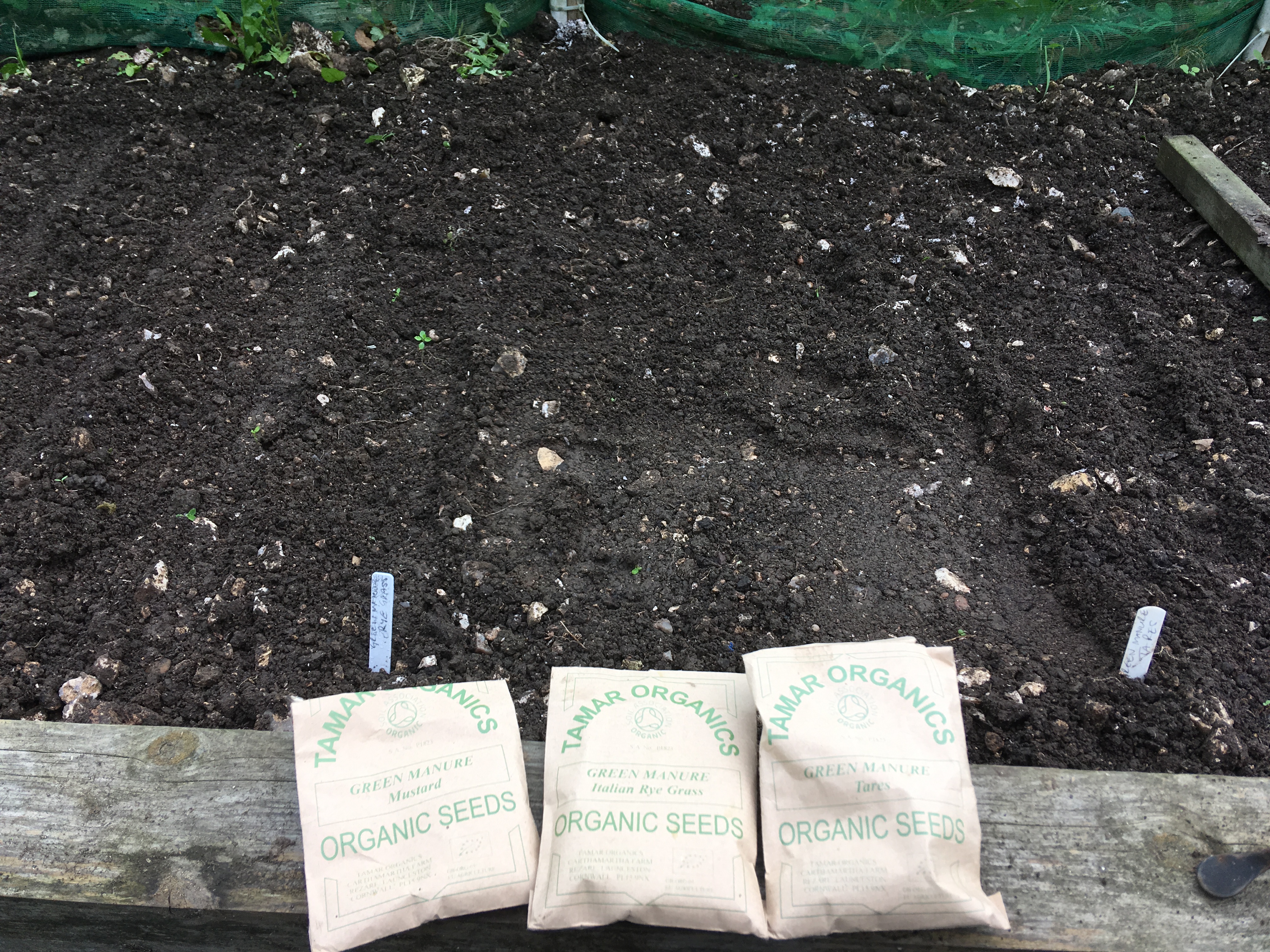A while back, one of our BHOGG members offered to run a trial of green manures to see which were the most effective and /or easy to grow. Below is a first report back on the trial from Russ:
I was really interested in the ‘Digging Green Gold‘ article from earlier in the year. I’d tried sowing green manures before, but without any success, so I decided to try again and be a bit more scientific. I chose a total of 6 green manures in all: 3 for autumn sowing / overwintering and 3 for sowing in spring. I also used the very handy green manure table to help identify the best types of plant for my needs – gardening on thin, well drained chalky soil.
I chose a spot in a netted cage so I could at least test the crops without the ‘help’ of the local bird population and sowed the overwintering seeds at the beginning of October: Mustard for its leguminous ‘nitrogen-fixing’ abilities, Italian Rye Grass for improving soil structure and Tares for a test of non-leguminous overwintering. I created 3 rows for each seed type, sowing them all on the same day and in line with the packet directions (although, possibly a little late for Mustard and Tares, but as the weather remained mild into early October, I risked it).
Barely 2 weeks later and Mustard was first off the blocks and racing away – coming up in thick rows of seedlings – it seems to have no problem with a later than recommended sowing. Even now it is standing happily amidst the wet and cold weather, looking green and spring-like. The Rye Grass was a slow second – you may be able to see if you look (very, very) closely the first fine tendrils of green emerging in the second picture. It remains poorly germinated so far but has at least made an appearance. Our third seed – Tares – has yet to show itself and I fear that a late sowing date, wet and then cold, may have done for the crop. But I won’t give up yet.
Additionally, I sowed some broad beans (green manures mention ‘field beans’ and as I couldn’t find a stockist using this term, I went with my hunch that says they’re the same thing as your common or garden broad bean). This crop is well-known for their leguminous qualities and I usually grow some as they are cheerful overwinter and (if the birds/ weather/ pests don’t get them) a welcome first crop come spring.
There won’t be much movement in the plants now until with weather warms up next year, so I will report back then on the autumn crop’s progress, and get started with my spring trial: Phacelia, Buckwheat and Red Clover.




As one of our members has pointed out, Mustard is actually a brassica, not a legume, and Winter Tares ARE legumes! Well spotted!
LikeLike